How to Take Care of a Lavender Tree
- September 19, 2024
- 0 comment
Lavender tree, often called “lavender standards,” are known for their stunning appearance and soothing fragrance. While lavender plants are typically bushy shrubs, a lavender tree is essentially a lavender plant trained into a topiary form. Lavender trees add elegance to any garden or patio space, offering both ornamental beauty and functional uses, such as the extraction of essential oils, teas, or just as a fragrant plant to enjoy.
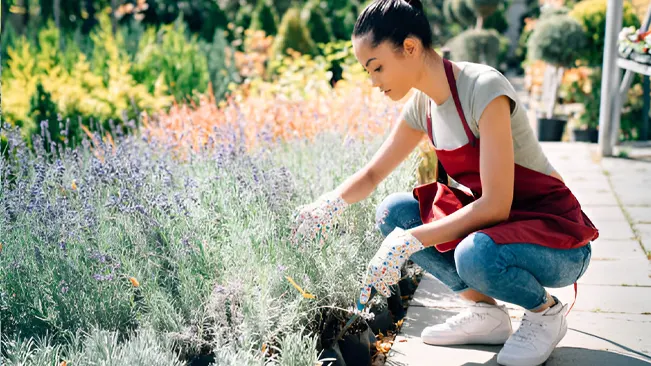
In this guide, we’ll explore everything you need to know about how to care for a lavender tree from choosing the right location to pruning and protecting it during the colder months. By following these steps, you can ensure that your lavender tree thrives for years to come.
1. Choosing the Right Variety of Lavender Tree
There are many different types of lavender, but not all of them are suitable for growing as a lavender tree. When selecting a lavender variety for a topiary or tree form, consider the following popular varieties:
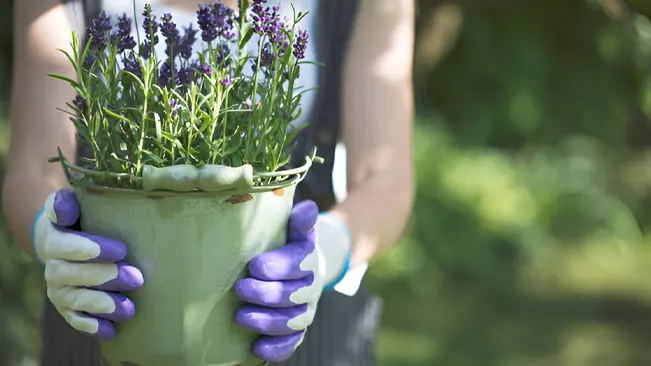
- English Lavender (Lavandula angustifolia): This is one of the most commonly grown lavender varieties. It is hardy, fragrant, and typically grows well in both cold and warmer climates.
- French Lavender (Lavandula dentata): Known for its toothed leaves, French lavender has a lighter, more pine-like fragrance. It thrives in warmer climates and is slightly less hardy than English lavender.
- Spanish Lavender (Lavandula stoechas): This variety is notable for its unique flower heads, which are adorned with “rabbit ear” petals. Spanish lavender is also more tolerant of hot, dry climates.
Before purchasing a lavender tree, assess the growing conditions in your area, including your climate and whether the tree will be indoors or outdoors, to choose the right type.
2. Selecting the Ideal Location
Lavender trees, like most lavender varieties, thrive best in sunny, well-ventilated environments. Whether grown indoors in pots or outdoors in gardens, it’s essential to provide the right balance of sunlight and air circulation.

- Sunlight: Lavender trees require at least 6-8 hours of direct sunlight daily. Position the tree in a location where it can absorb maximum sunlight. If kept indoors, place it near a south-facing window for adequate light.
- Ventilation: Ensure good air circulation around your lavender tree to prevent fungal diseases. Avoid placing it in areas with stagnant air or high humidity.
- Soil Considerations: Lavender prefers well-draining, slightly alkaline soil. If planting in the ground, improve drainage by adding organic matter such as compost or sand. If potted, use a well-draining soil mix designed for herbs or Mediterranean plants.
3. Watering Your Lavender Tree
Lavender trees are drought-tolerant once established, but they still require consistent watering, especially when young or newly planted. The key is to avoid overwatering, as lavender is sensitive to waterlogged conditions.
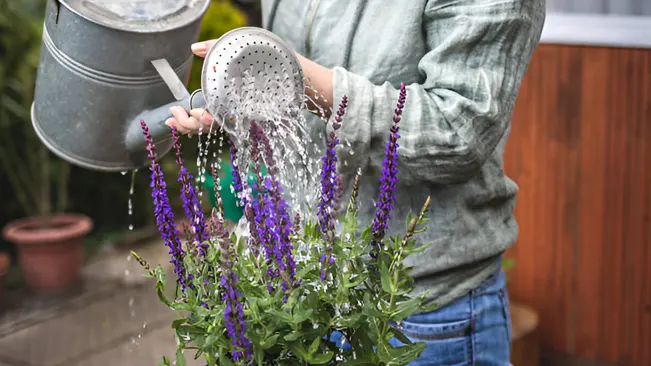
- Watering Frequency: Water the lavender tree when the top inch of soil feels dry. In summer, this may mean watering it once or twice a week. During cooler months, reduce watering to once every two to four weeks.
- Proper Drainage: Always check that your pot or garden area has adequate drainage. Lavender roots can rot if left in standing water, so ensure excess water can easily escape.
- Avoid Overhead Watering: When watering, focus on the base of the plant and avoid splashing water on the leaves or flowers. Wet foliage can encourage fungal diseases.
4. Fertilizing Your Lavender Tree
Lavender trees typically do not need heavy feeding, but occasional fertilization can support healthy growth and vibrant flowers.
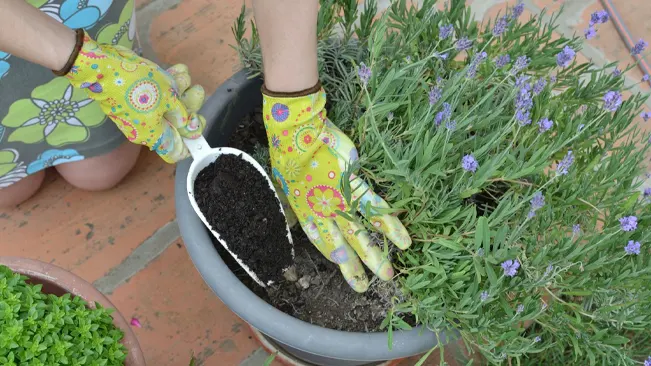
- When to Fertilize: Apply a balanced, slow-release fertilizer in the spring when new growth begins. A second light application can be made in mid-summer if needed, but avoid feeding too late in the season, as this can promote tender new growth vulnerable to frost.
- Type of Fertilizer: Choose a low-nitrogen fertilizer, as too much nitrogen can lead to excessive leaf growth at the expense of flowers. A fertilizer designed for Mediterranean plants or herbs is a good option.
5. Pruning and Shaping Your Lavender Tree
Pruning is an essential part of maintaining the shape and health of your lavender tree. Without regular pruning, the tree can become leggy, top-heavy, or prone to splitting.
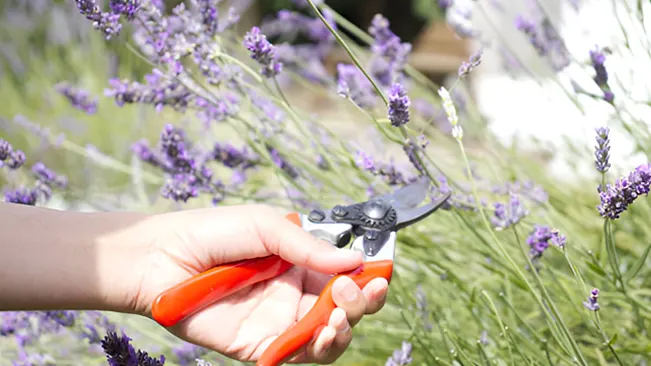
- When to Prune: The best time to prune lavender is after it has finished flowering, typically in late summer or early autumn. This allows the plant to focus on regrowth and reserves for the winter.
- How to Prune: Trim the top growth back by about one-third, focusing on removing spent flowers and thinning out any dense areas to improve air circulation. Always cut just above a leaf node to encourage bushy growth.
- Shaping the Tree: When pruning a lavender tree, maintain its topiary shape by trimming the top and sides evenly. Remove any lower branches or shoots that sprout from the trunk, keeping the “tree” appearance intact.
6. Repotting and Transplanting Lavender Trees
As your lavender tree grows, it may outgrow its pot and require repotting. Repotting is also a good opportunity to refresh the soil and check the health of the roots.

- When to Repot: Repot lavender trees in early spring or after pruning in autumn. This gives the plant time to establish its roots in the new soil before flowering or dormancy.
- How to Repot: Choose a pot that is 1-2 inches larger in diameter than the current one. Use fresh, well-draining potting mix and ensure the pot has drainage holes. Gently remove the tree from its old pot, being careful not to damage the roots, and replant at the same soil level.
- Transplanting Outdoors: If moving your lavender tree to the garden, choose a sunny spot with well-draining soil. Prepare the planting hole by mixing in sand or gravel to improve drainage.
7. Managing Pests and Diseases
Lavender is generally resistant to pests, but certain conditions can make it vulnerable to some issues.
- Aphids: These small insects can cluster on the stems and leaves, sucking sap from the plant. To control aphids, spray your lavender tree with a strong stream of water or use insecticidal soap.
- Fungal Infections: Poor air circulation or overwatering can lead to fungal problems such as root rot or mildew. To prevent this, prune regularly to ensure good airflow and avoid overhead watering.
- Leafhoppers: These tiny, jumping insects can sometimes attack lavender, causing stippling or yellowing of the leaves. Using neem oil or introducing beneficial insects like ladybugs can help control infestations.
8. Winter Care and Cold Protection
Lavender trees are more susceptible to cold damage than lavender shrubs because of their exposed trunk and elevated top growth.
- Bringing Indoors: If you live in a region with cold winters, consider bringing your lavender tree indoors during frost periods. Place it in a bright, cool area like a sunroom or enclosed porch, away from heating vents.
- Outdoor Protection: If keeping your lavender tree outdoors in a pot, wrap the pot with bubble wrap or a protective covering to insulate the roots from freezing. You can also cover the tree with frost cloth during particularly cold nights.
- Mulching: Apply a layer of mulch around the base of the tree if it’s planted in the garden. This will help insulate the roots and retain soil warmth.
9. Harvesting Lavender from Your Tree
One of the joys of having a lavender tree is harvesting its fragrant flowers for use in various ways. Whether you’re using lavender for decorative purposes, essential oils, or culinary uses, proper harvesting ensures the best quality.
- When to Harvest: The best time to harvest lavender is when the flowers are fully open but not yet faded. Typically, this will be in mid-summer.
- How to Harvest: Use sharp scissors or pruning shears to cut flower stems just above a leaf node. Hang the harvested stems upside down in a dry, dark, and well-ventilated area to dry. Once dry, remove the flowers and store them in an airtight container for future use.
10. The Importance of Consistency in Lavender Tree Care
Consistency is key when caring for a lavender tree. Once you’ve established a routine for sunlight, watering, pruning, and feeding, stick to it to keep the tree healthy and vibrant. Lavender trees are relatively low-maintenance once established, but any sudden changes in care can stress the plant.
In addition to the practical care tips, it’s also helpful to keep a seasonal garden journal. By noting down what works and when you performed tasks such as pruning or fertilizing, you can build a care routine that aligns with your lavender tree’s specific needs.
Conclusion
Lavender trees offer a delightful combination of ornamental beauty and functional benefits, making them a perfect addition to both indoor and outdoor spaces. By understanding the specific care requirements—such as the importance of sunlight, well-draining soil, and proper pruning techniques—you can enjoy the aromatic flowers and elegant structure of your lavender tree for many seasons to come. Consistent attention to watering, feeding, and seasonal adjustments, such as winter protection, will keep your lavender tree healthy, fragrant, and flourishing.
Frequently Asked Questions (FAQs)
- What’s the best type for a lavender tree?
English lavender (Lavandula angustifolia) is the most popular for lavender trees due to its strong fragrance and hardiness. It thrives in cooler climates. French lavender (Lavandula dentata) and Spanish lavender (Lavandula stoechas) are good options for warmer areas, offering a slightly different look and scent. - How much sun does it need?
A lavender tree needs at least 6 to 8 hours of direct sunlight daily. This plant thrives in full sun, so placing it in a sunny spot outdoors or near a south-facing window indoors is essential. Lack of sunlight can cause leggy growth and fewer flowers. - How often should I water?
Water your lavender tree when the top 1-2 inches of soil feels dry. In summer, this typically means watering once or twice a week. During cooler months or indoors, water less frequently, around once every 2-3 weeks, as lavender prefers slightly dry conditions. Avoid overwatering, as lavender trees are prone to root rot. - What soil is ideal?
Lavender trees prefer well-draining, sandy, or gritty soil. If planting in pots, use a potting mix designed for Mediterranean plants or a mixture of regular potting soil with sand or perlite to ensure drainage. A slightly alkaline pH level (around 7.0-8.0) is ideal. Good drainage is crucial to avoid waterlogging. - When should I prune it?
Prune your lavender tree after it finishes flowering, usually in late summer or early autumn. This prevents the plant from becoming too woody and helps maintain its shape. Trim back about one-third of the growth to encourage bushier growth and remove any spent flowers. Always use sharp, clean pruning shears and avoid cutting into old wood, as lavender has difficulty regenerating from it. - Can I grow it indoors?
Yes, a lavender tree can be grown indoors, but it requires ample sunlight and ventilation. Place it near a south or west-facing window where it can get at least 6 hours of sunlight daily. Rotate the tree occasionally to ensure even growth. Lavender trees grown indoors also need well-draining pots and soil to prevent water buildup. - Why are the leaves browning?
Browning leaves on your lavender tree could be a sign of overwatering, which leads to root rot, or poor drainage. Ensure the pot or planting area has proper drainage and let the soil dry out between waterings. Browning can also occur due to insufficient sunlight, causing the plant to become stressed. Make sure the plant is getting enough light and ventilation. - How do I protect it in winter?
If you live in a region with cold winters, lavender trees need protection from frost. Bring the tree indoors when temperatures drop below freezing. Place it in a cool, well-lit room or sunroom away from heating vents. For outdoor lavender trees, insulate the roots by wrapping the pot in bubble wrap or placing it in a sheltered location. Use frost cloth to cover the plant during particularly cold nights. - Does it need fertilizer?
Lavender trees are light feeders and do not require much fertilization. A light application of a low-nitrogen, slow-release fertilizer in the spring is usually enough to support growth. Too much nitrogen can encourage excessive leafy growth at the expense of flowers. Fertilize only once or twice a year, as lavender thrives in nutrient-poor soil. - When to harvest lavender?
The best time to harvest lavender is when the flowers are fully open, but before they start to fade, which is usually in mid-summer. To harvest, cut the flower stems just above a leaf node. Dry the stems by hanging them upside down in a cool, dark, and well-ventilated place. Dried lavender can be used for making sachets, potpourri, or essential oils.

Kristine Moore
Forestry AuthorI'm Kristine Moore, a seasoned garden landscaping professional with over 30 years of experience. My extensive career has been dedicated to transforming outdoor spaces into stunning, sustainable landscapes. With a deep understanding of horticulture, design principles, and environmental stewardship, I have become a respected figure in the field, known for creating harmonious, visually appealing, and eco-friendly gardens. My commitment to excellence and continuous learning in landscaping trends and techniques has solidified my reputation as an expert in garden design and implementation.




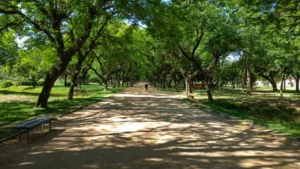
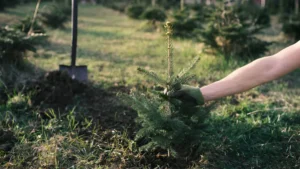


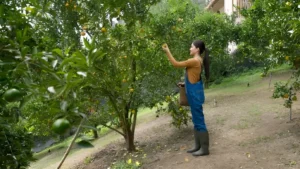

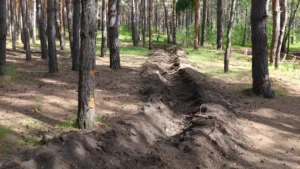

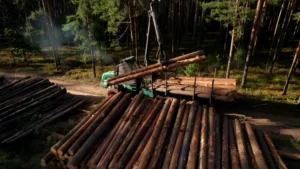
Leave your comment